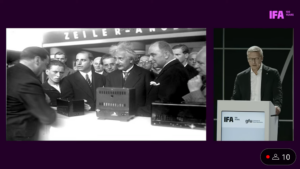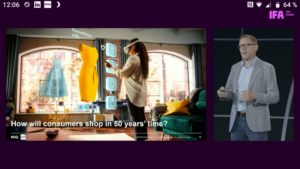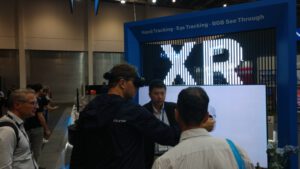Europe’s leading consumer electronics show, IFA, celebrated its 100th anniversary in 2024, marking the milestone with a rebranding. The traditional logo, known for its red signal color and audiovisual media-related icons, was replaced by a simplified text-based logo with a more technical color palette ranging from blue to violet. The historical meaning behind the acronym Internationale Funkausstellung, which originally referred to broadcasting traditions, was expanded to encompass a broader vision of “Innovation For All.” A holographic animation of Einstein greeted visitors at the main entrance, symbolically bridging the early days of radio broadcasting with today’s digital advancements.


While the past holds its glory and the future promises innovation, the present still faces the challenge of post-pandemic rebalancing. The market for consumer electronics remains stagnant, with expectations of recovery by next year. Market growth is predicted to be driven by smart home appliances, online logistics, and retail entertainment. As a result, AI and sustainability emerged as key themes in this year’s show, featured prominently in keynotes, lectures, and product showcases. Startup incentives and concept demonstrations at IFA Next focused on robotics and health appliances.


AI was prevalent across a wide range of products, from foldable smartphones and business laptops to ever-expanding television screens. The once “smart” home is now evolving into a hub of AI-driven equipment, including textile-recognizing washing machines, energy-saving appliances, kitchen robots, and remote security management systems. Retailers are expected to attract customers back from online commerce through localized shopping entertainment and innovative product displays, such as transparent microLED installations.


A significant amount of inspiration for reinvigorating consumer spending came from Asia. South Korean innovations took center stage at the IFA Next startup hub, while playful shopping attractions and AI-powered product personalization from China redefined online marketing and distribution. Chinese “shoptainment” blends entertainment with brand marketing, integrating product placement into the production process itself. A popular Chinese game with outstanding graphics was used to promote TV screens and gaming monitors across the show floor. In fact, Chinese brands occupied half of the exhibition space, displacing traditional showcases from Japan and the US.


XR was heavily used in IFA’s advertising to emphasize innovation, but the actual products on display were limited to video glasses and basic AR. Advancements in glasses-free 3D televisions and prototypes for 3D gaming monitors with eye-tracking technology hinted at the integration of XR components into traditional entertainment devices. However, beyond the promotional materials, VR and gaming were relatively scarce. This wave of “innovation” seems to have either already peaked or may evolve further in the future, “for all”.

